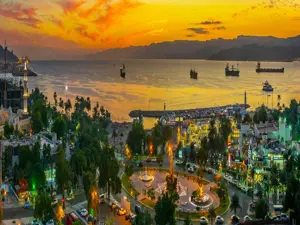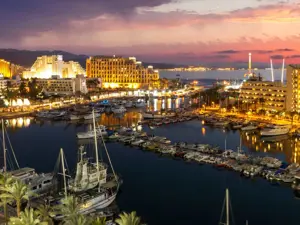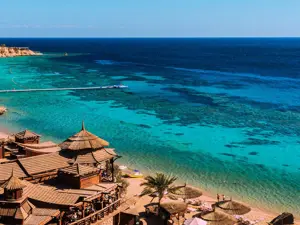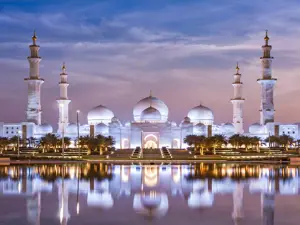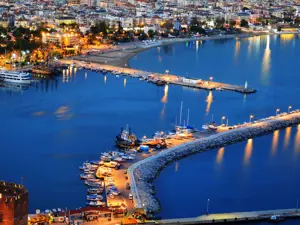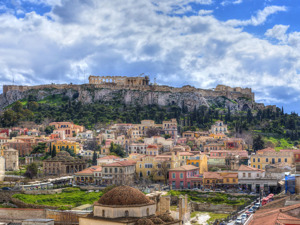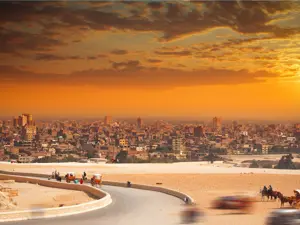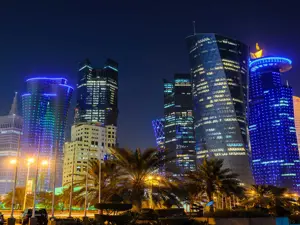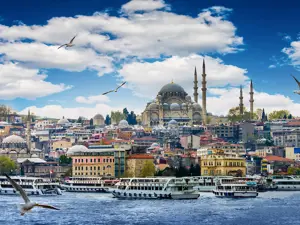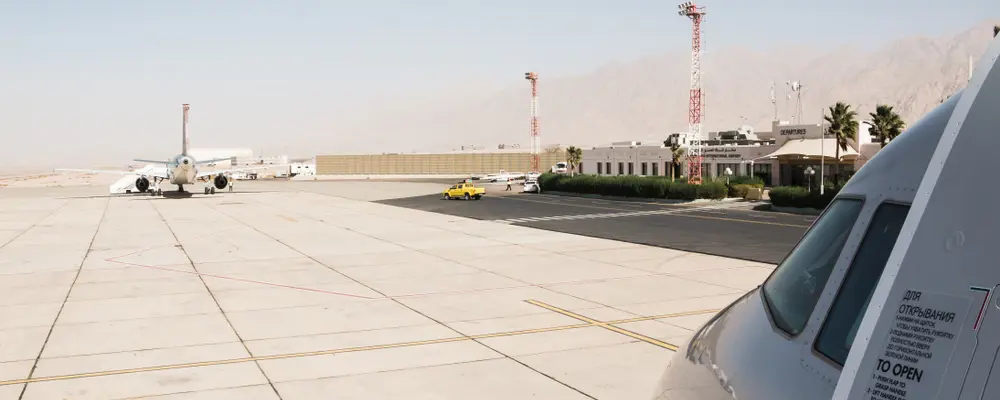Captivating Jordanian city on the Red Sea
Its name evokes the endeavours of the legendary Lawrence of Arabia, defender of Arab nationalism against the Ottomans during the First World War. Today Aqaba is a welcoming port city, inviting and full of charm and surprises, and is a destination not to be missed for visitors to Jordan.

Here the traveller can find not only vast sandy beaches and extraordinary coral reefs in the depths of a crystal blue sea, but also an oasis of solace and serenity, in contrast to the dry climate of the northern desert. Visitors are also assured of a warm, friendly welcome from the local people.
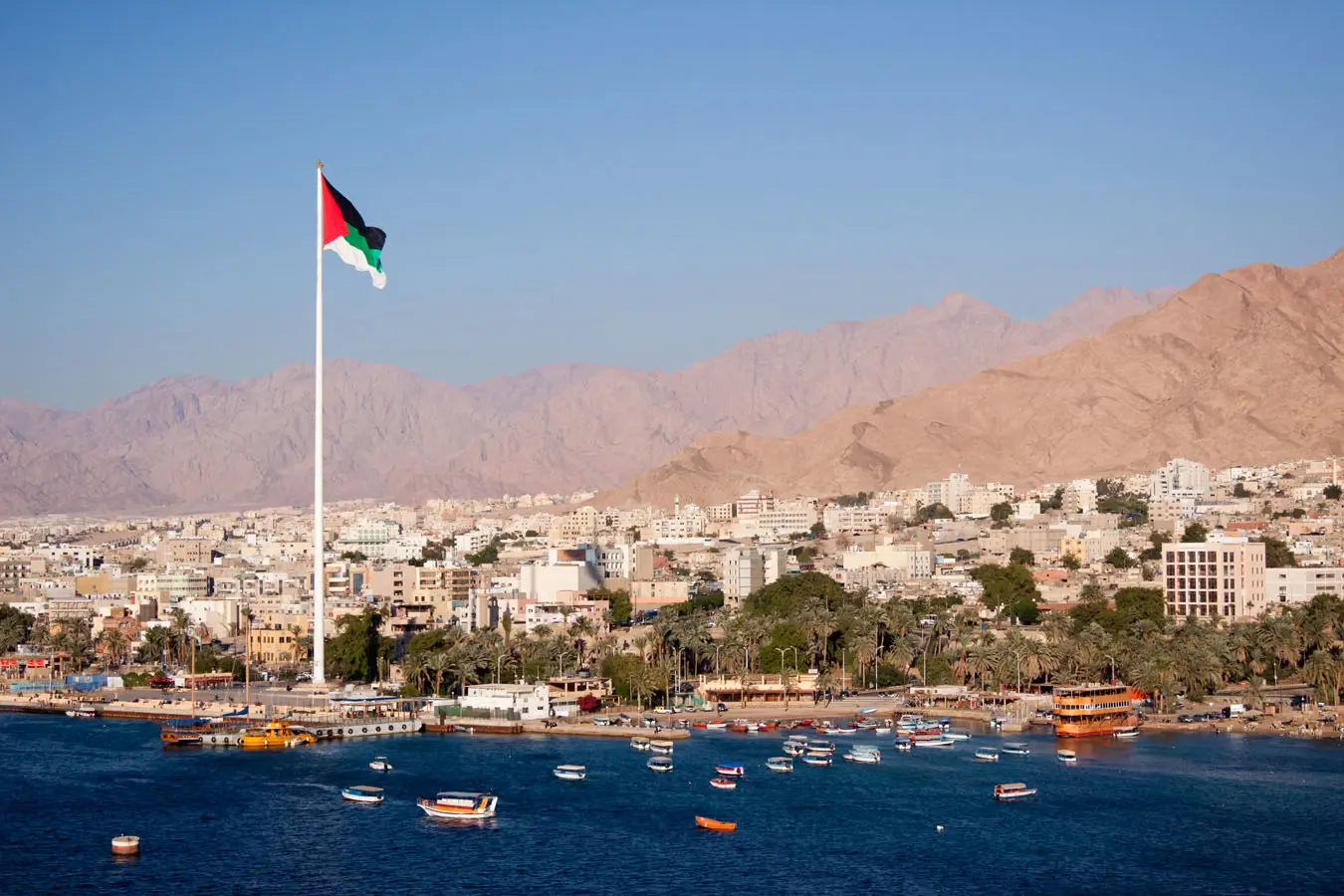
A haven for scuba divers, the clear, warm tropical seas are ideal for diving at almost any time of the year. Aqaba offers numerous diving sites with hundreds of species of coral, brightly coloured molluscs and crustaceans as well as the wrecks of sunken boats and even a tank that has been sitting on the sea floor for decades. Boats with glass hulls are available for non-divers, offering incredible views of the wonders of the undersea world.

The city is also known for its numerous spas which pamper and revitalise using salts from the Dead Sea. In this colourful, lively town, a visit to some of its most characteristic locations is a must: the busy souk by the sea, emanating a heady aroma of spices, sells a wide variety of craft products and food, and offers fun for all the family.
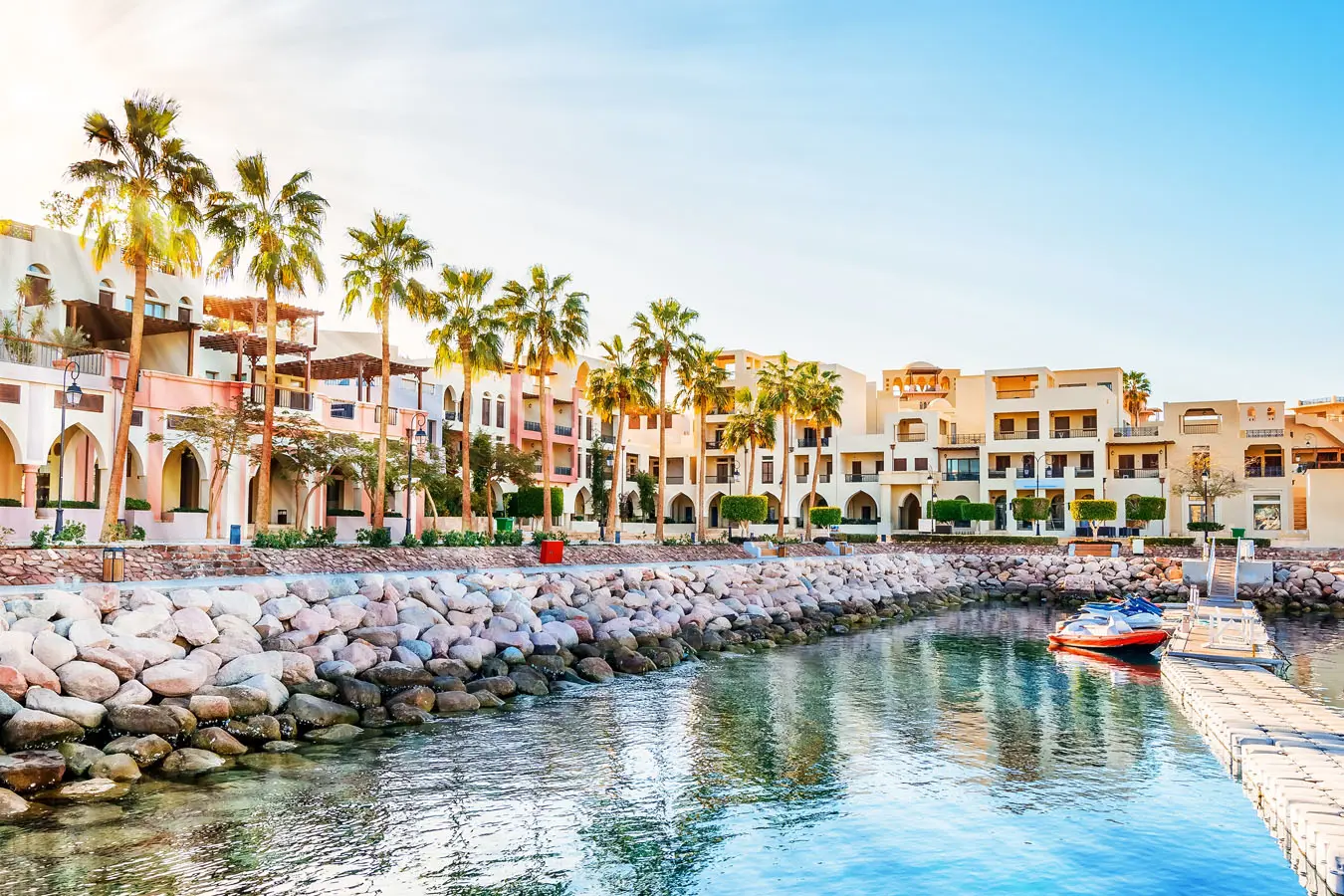
Also recommended is a visit, preferably at sunset, to Fishermen’s Harbour to enjoy the sight of the catch of the day and listen to music of the traditional Simsimiyya, an ancient instrument played by people of the Red Sea and used by fishermen on their return to port. However, Aqaba not only offers natural wonders and relaxation, but also has a rich and glorious past dating back to the Iron Age, which has been brought to light during numerous archaeological digs and is seen in its unique monuments.
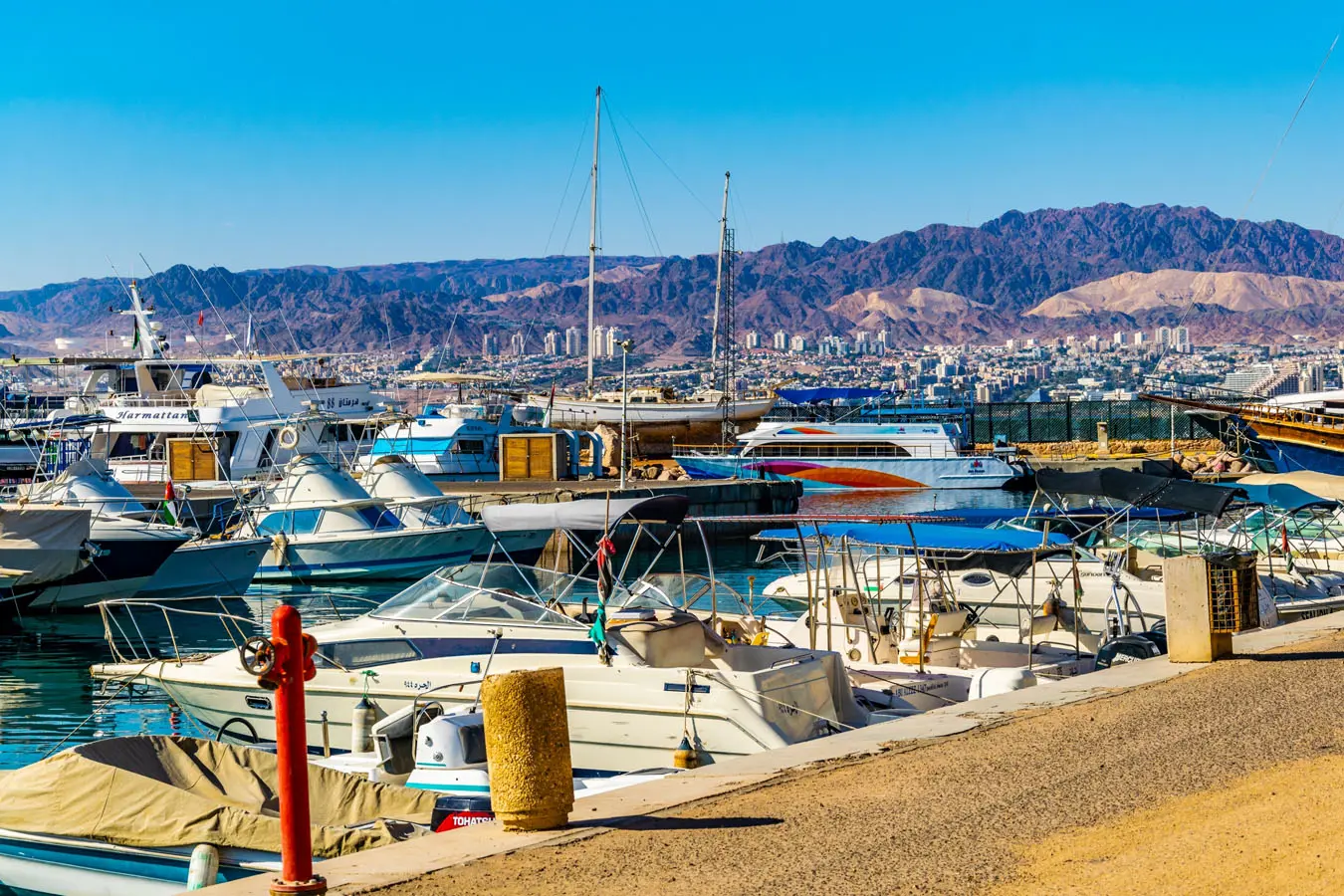
Among these, inside the ancient Islamic city of Ayla, the remains of a mud brick building, identified as a church, has been dated to around the 3rd or 4th century, making it one of the oldest of its kind. Aqaba Castle, another admirable building, is an old castle that was rebuilt in the sixteenth century and used in the past for military purposes as well as a place where pilgrims travelling to Mecca could rest.
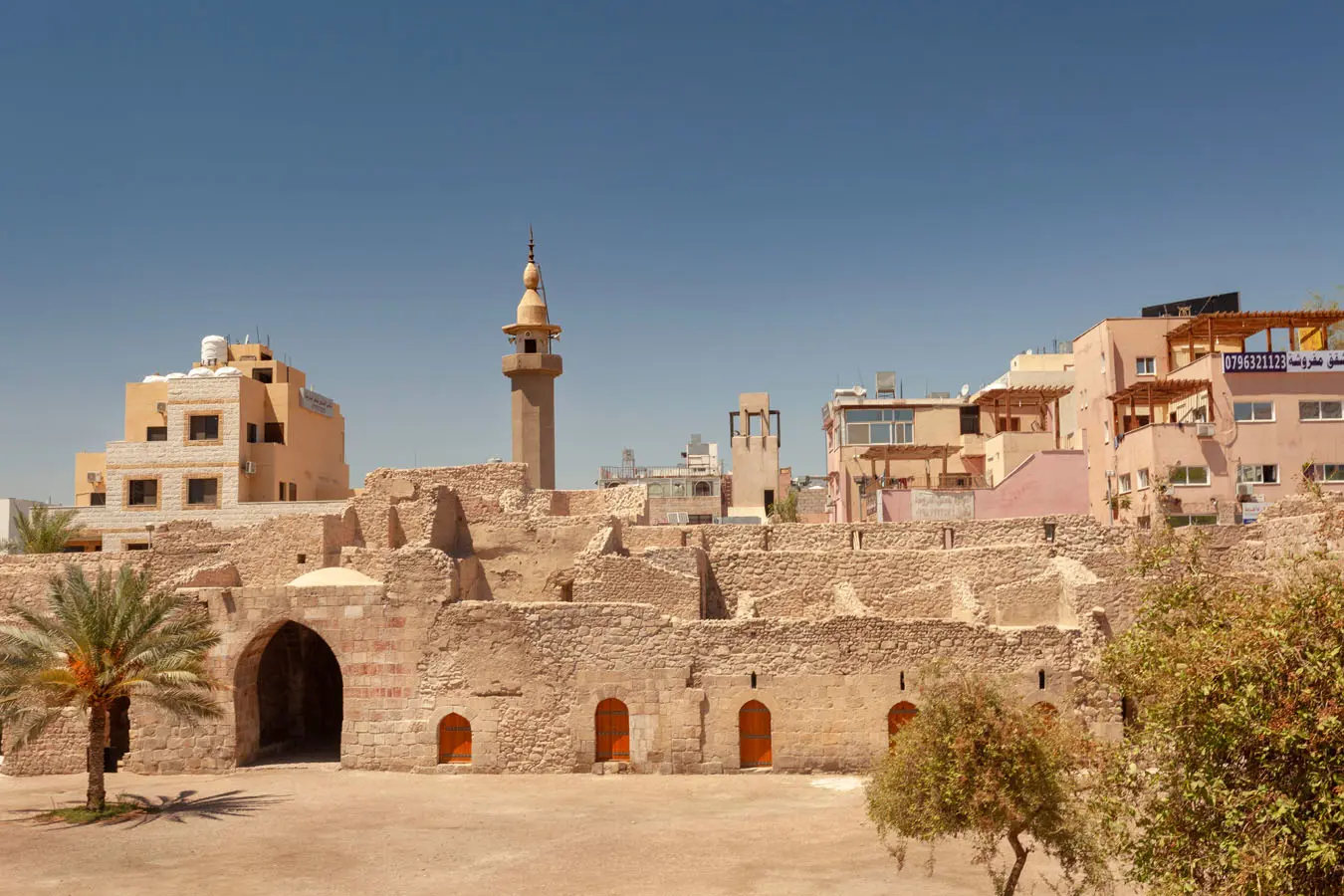
Nearby is the Archaeology Museum with an interesting collection of artefacts that testify the trading past of the city. Holding an important place in the city’s history was the trading of gemstones such as amethyst, lapis lazuli and amber, which are still used today by craftsmen and goldsmiths to make beautiful jewellery, often on request or according to the customer’s design.
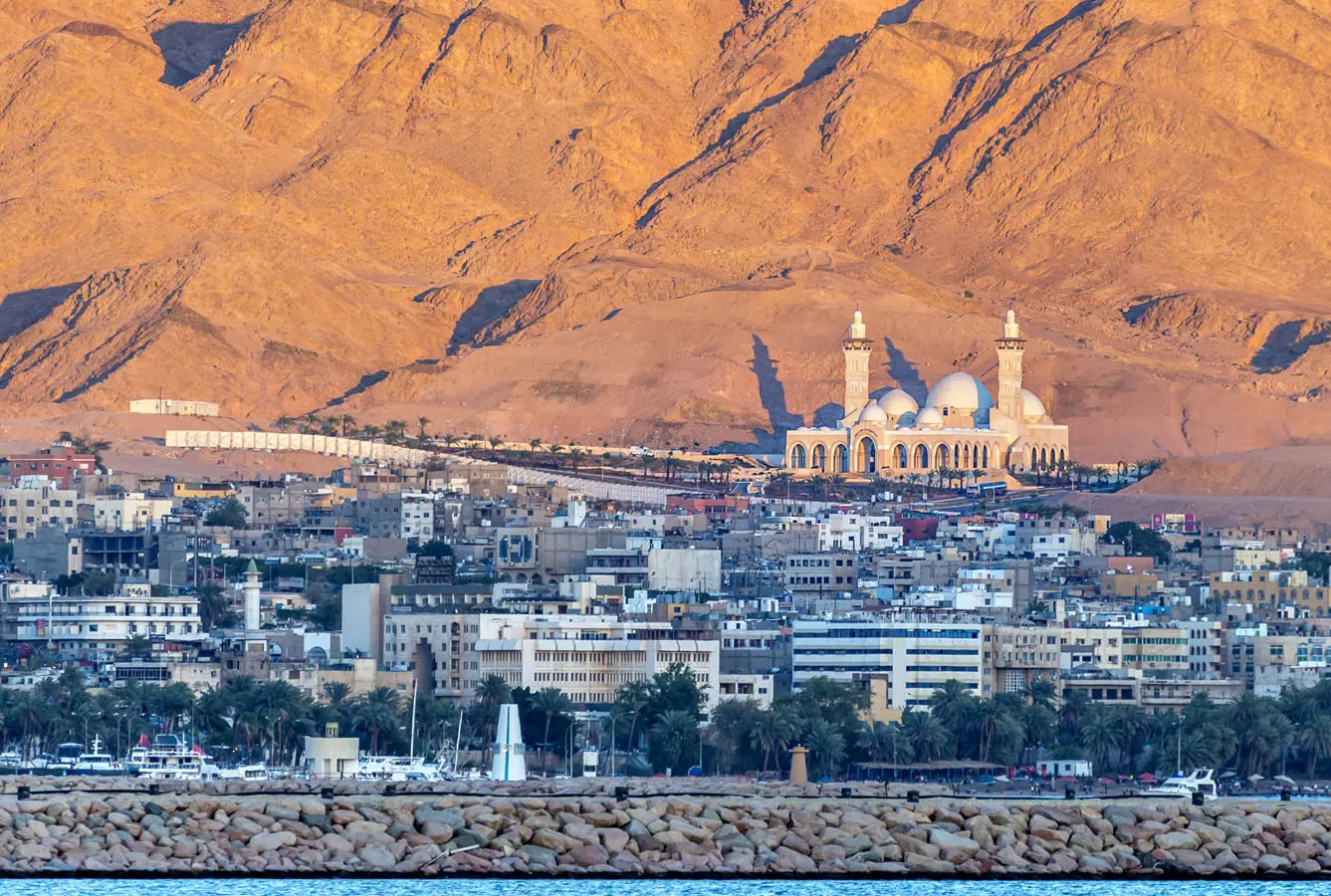
In this bustling Islamic city, a visit to the extraordinary white mosques is a must. These include the Sharif Hussein bin Ali Mosque, located between the souk and beach, and the Sheikh Zayed Mosque, both of which are surrounded by luxuriant gardens and embellished with minarets and traditional Arab decorations. Other interesting places of worship in the city include the third century Roman church, considered the oldest church in the world, which was built at a time when Christianity was beginning to spread into Islamic countries.
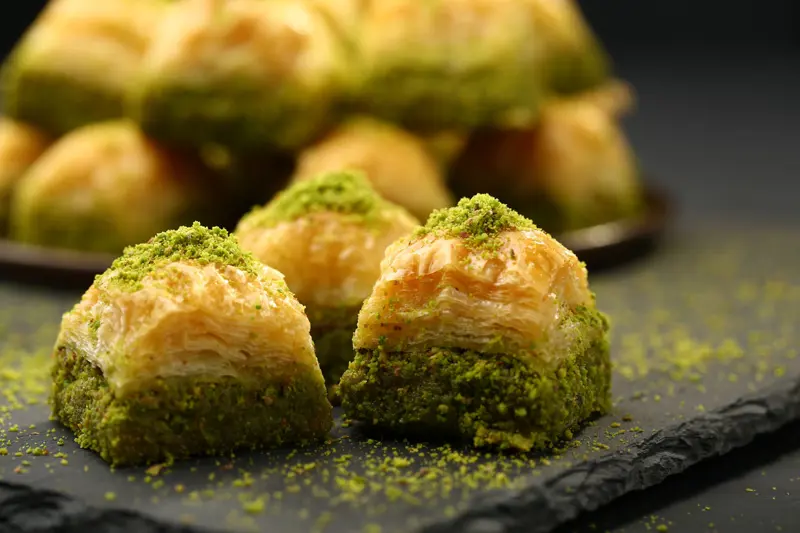
The specialities of Aqaba
The aromas lingering around the city entice visitors to try local specialities in which spices bring colour and heat to the food, such as:
- Mu’ajanaat (pastries stuffed with meat, cheese, spinach or potatoes),
- Sayyadieh (lightly spiced fish served on a bed of rice),
Baklawa (a sweet made of thin layers of puff pastry filled with
pistachios).
The national dish of Jordan is Mansaf, with mutton, lamb or chicken, almonds and pine nuts cooked in a yoghurt sauce called jameed.
Text by Anna Fusai
Aggiornamento a cura di Alisè Vitri
Avion Tourism Magazine
Photos: Copyright © Sisterscom.com / Shutterstock
Photos: Copyright © Sisterscom.com / Shutterstock
All rights reserved.
Tourism Board
www.visitjordan.com
Partnership with Booking.com
Where to sleep in Aqaba
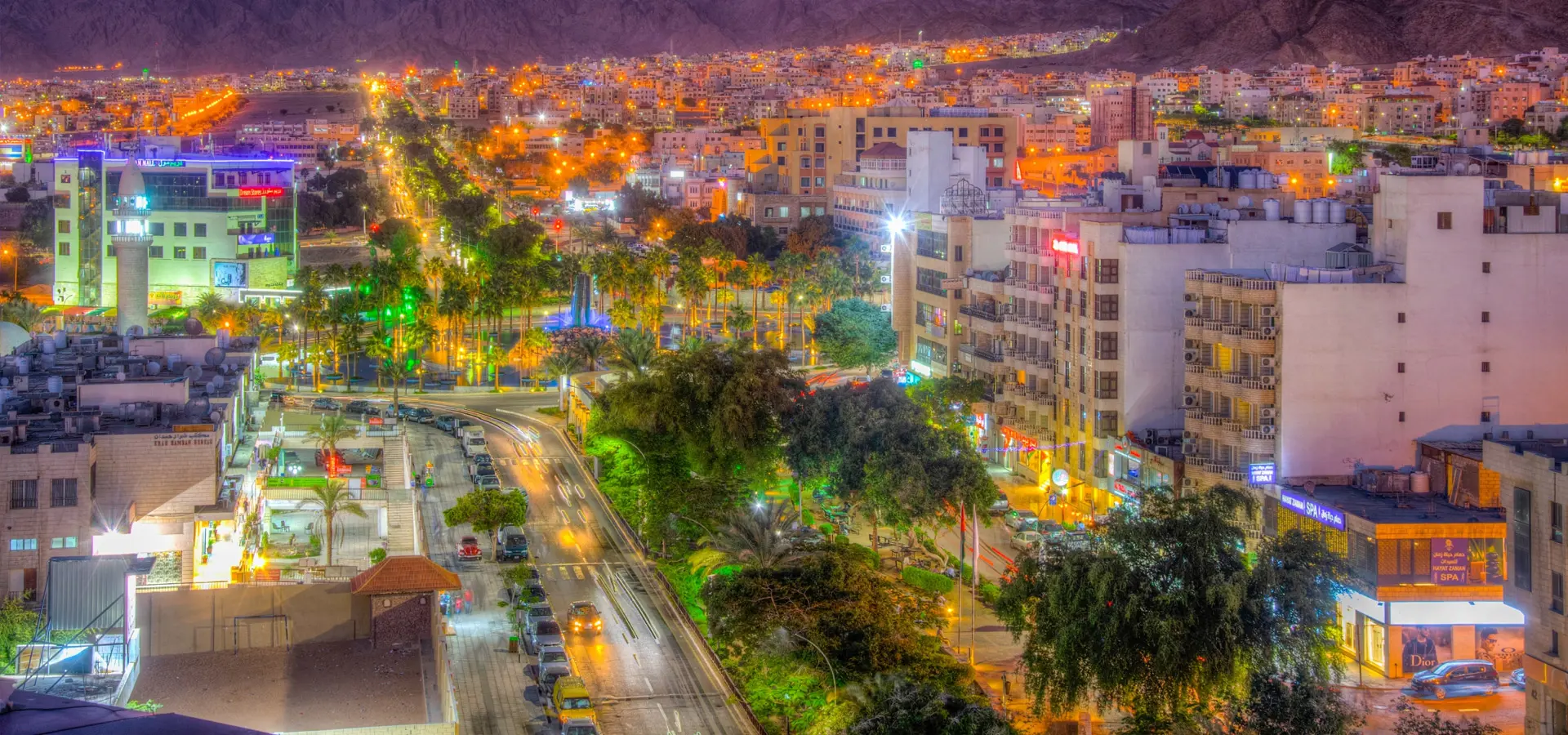
Aqaba is a welcoming city and offers different possibilities for accommodation.
To find the ideal hotel and the best offers you can do a search for the stars but also for districts or landmarks.
AIRPORT
Hotels near the airport
REGION
Hotels near Aqaba
WHERE TO GO in Aqaba
Monuments of Aqaba
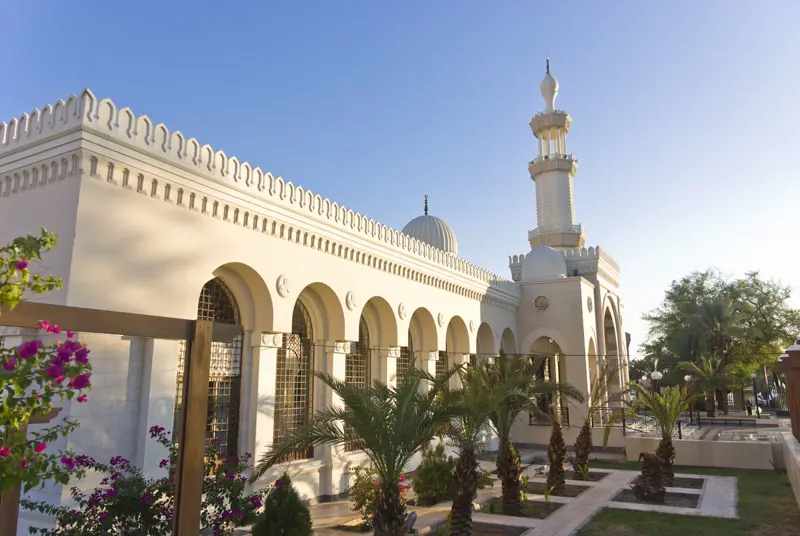
AL SHARIF AL HUSSEIN BIN ALI MOSQUE
The Al Sharif Al Hussein Bin Ali Mosque is located between the souk and the beach and takes its name from the Emir who was known as the initiator of the famous Arab Revolt against the Turks, which was supported by the British colonel and archaeologist Lawrence of Arabia. It has the largest dome of all of Jordan’s mosques and is a religious point of reference for Jordanians.
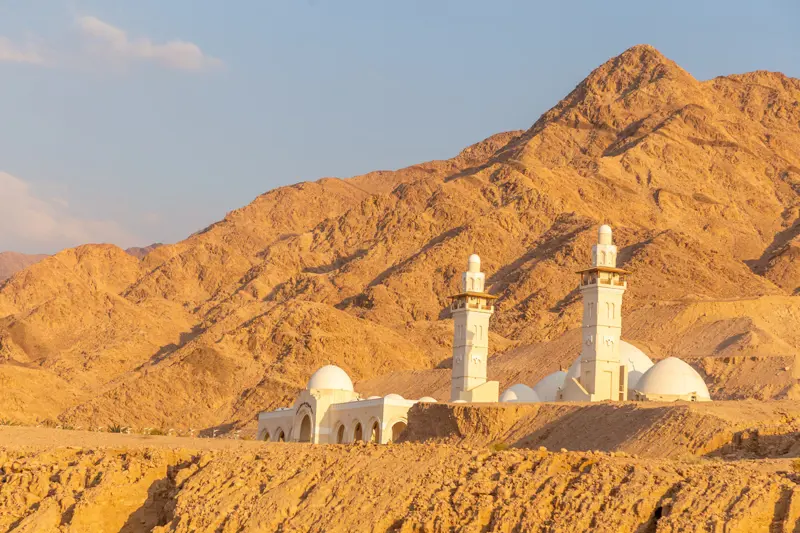
SHEIK ZAYED MOSQUE
Set among rosy mountains, the Sheikh Zayed Mosque overlooks the sea in an area of new development which is also a centre for tourism. The mosque features two tall minarets and some 28 domes. It is adorned with Islamic geometric decorations crafted by Jordanian artisans, lush gardens and various fountains.
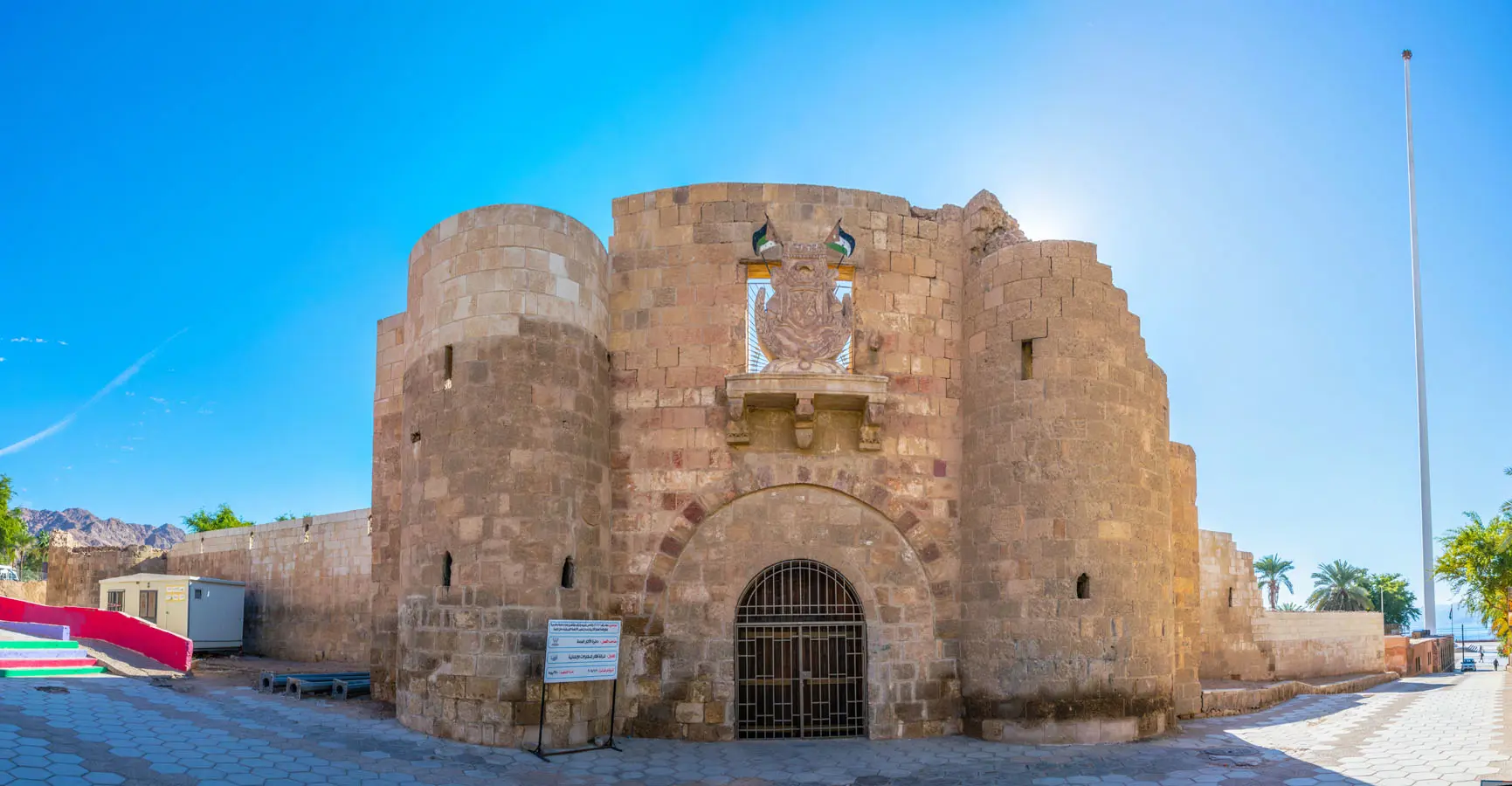
AQABA CASTLE
Aqaba Castle is a fortress built during the reign of the Mamluk Sultan Qanswah el-Ghawri between 1510 and 1517, as stated in the Arabic inscription on its entrance gate. It was extended and rebuilt several times following various episodes of destruction. It was originally a military site and place of lodging and rest for pilgrims heading to Mecca.
FOURTH-CENTURY ROMAN CHURCH
The fourth-century Roman Church of Aqaba was rediscovered after archaeological excavations and dates back to the late third century/early fourth century AD. It is considered the oldest church in the world, older than the Church of the Holy Sepulchre in Jerusalem and the Church of Nativity in Bethlehem, both of which date back to the fourth century. The building is a simple brick construction and inside holds the remains of a fresco depicting figures in procession.
STELLA MARIS CHURCH
The Church of Stella Maris in Aqaba is a Christian church inaugurated in 2012. Built in modern style by the architect Oussama Twal, it is very bright with 450 places for the faithful and is located just minutes from the sea. Under the church a large room was also built to house Christian festivals, a place of spiritual welcome.
Museums in Aqaba
MUSEUM OF THE HERITAGE OF AQABA
Located in the middle of the coast near the fishermen's port, the Aqaba Heritage Museum is housed in an ancient building, an almost unique model of mud house with leaf roof and gravel floor. There are two rooms, one for the guests used as a living room with the typical equipment for making tea or coffee, with weapons on the walls, and a bedroom with a singular basket, which was given to the bride as a wedding gift to store the his clothes.
ARCHAEOLOGICAL MUSEUM OF AQABA
The Archaeological Museum of Aqaba is located near the large flag that flutters on a 136 meter flagpole and proudly recalls the Arab victory over the Turks. Originally the museum was built as a palace for the founder of the Hashemite dynasty Hussein Bin Ali and houses an important collection of the ancient Islamic city of Ayla: ceramics, a treasure trove of Fatimid gold coins and vases from the Islamic period from the mid-7th century at the beginning of the 12th century AD.
Excursions in Aqaba and its surroundings
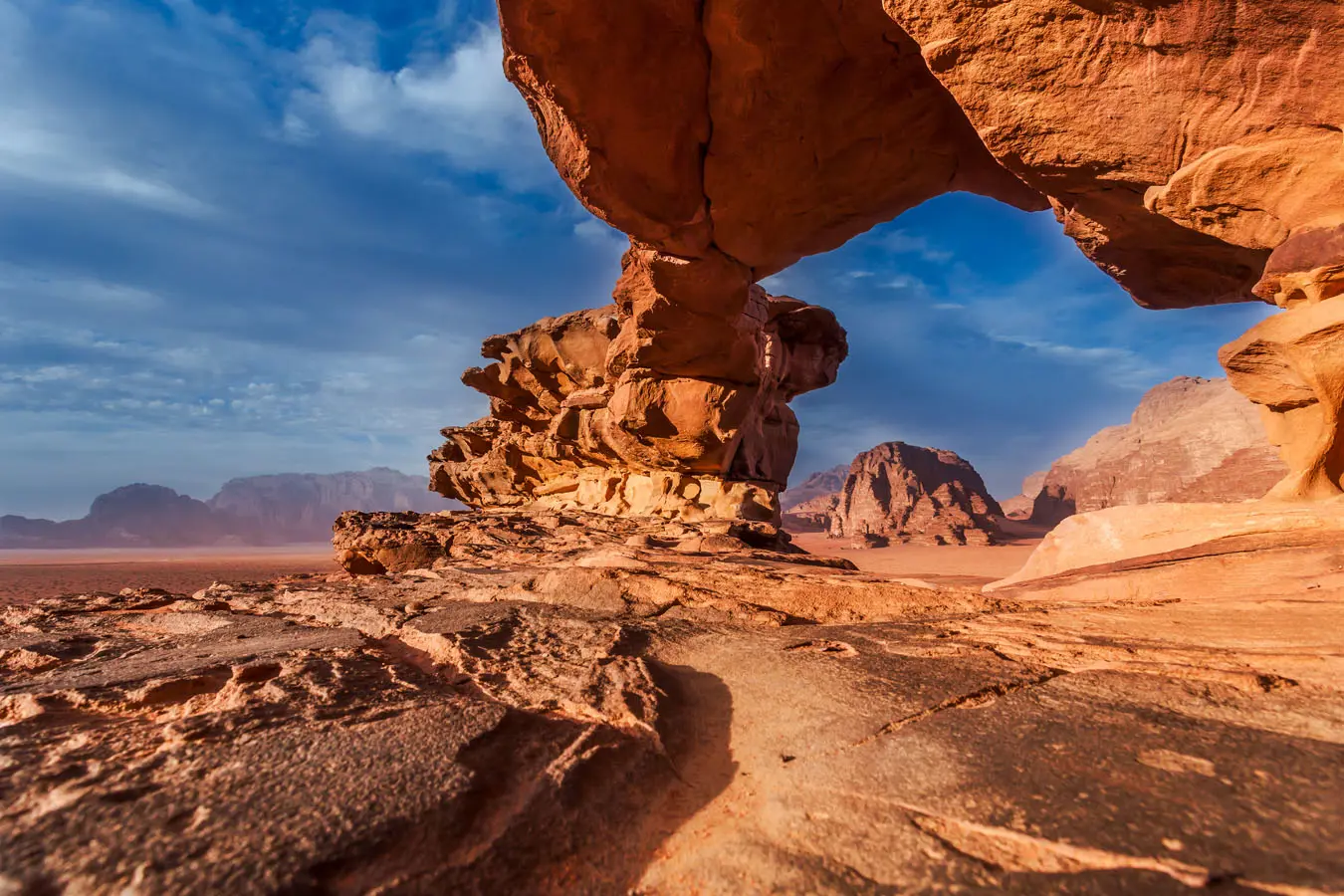
WADI RUM
A trip to Wadi Rum is an experience not to be missed. A sandy desert plain situated at 1,000 metres above sea level, Wadi Rum offers visitors the opportunity to discover the lifestyle of the Bedouins, experiencing it first hand by staying and eating in their tents and listening to traditional music. Here, members of this old nomadic people act as tourist guides, accompanying tourists on camel rides or excursions by jeep to see the wonders of the area, including the remains of the temple of the goddess (32 AD) and beautiful rock engravings.
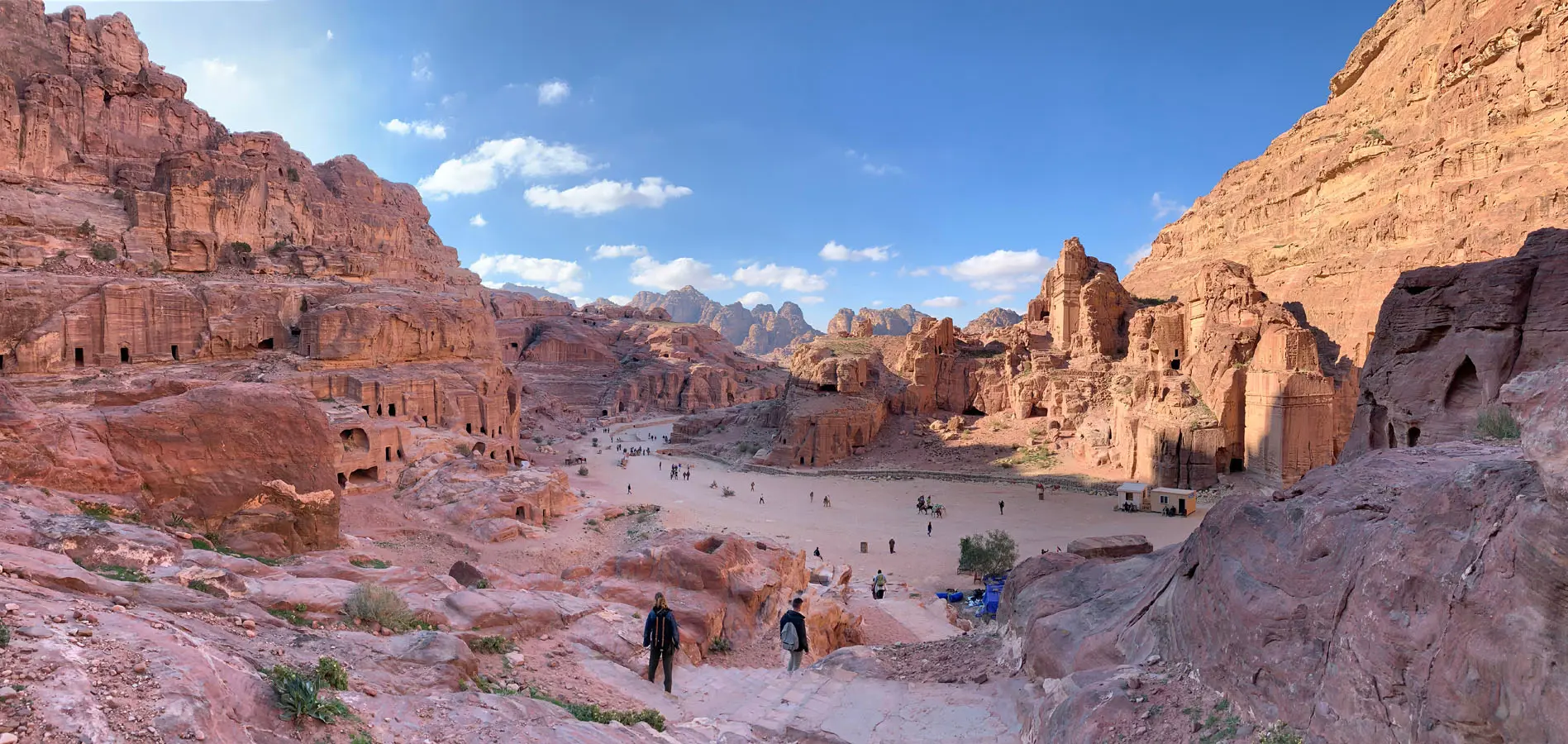
PETRA
Petra is considered Jordan’s most valuable treasure and the country’s greatest tourist attraction. This magical city, built from pinkcoloured rock, was dug out over two thousand years ago by ancient Nabatean traders who controlled this section of the vital trade route that linked ancient Mesopotamia with Egypt. Declared a UNESCO World Heritage Site in 1985, Petra offers a rich and beautiful array of rock-cut facades, buildings and tombs.
Partnership with GetYourGuide
Recommended tours and excursions in Aqaba and its surroundings
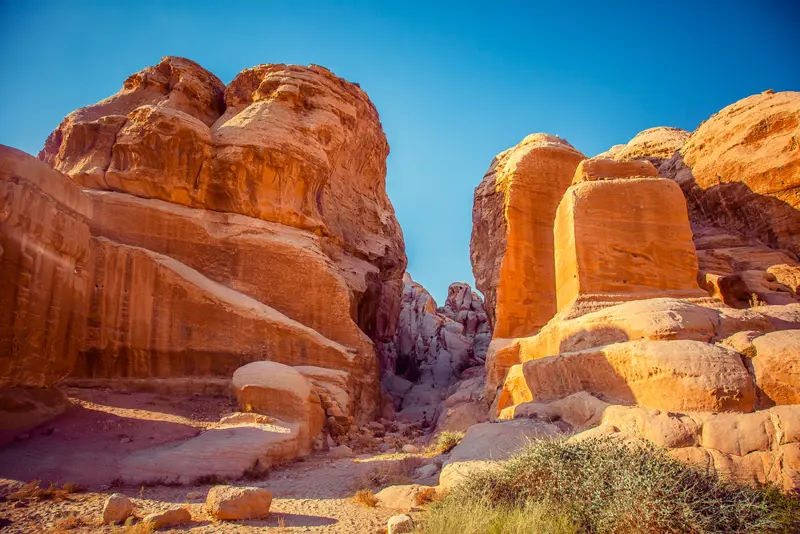
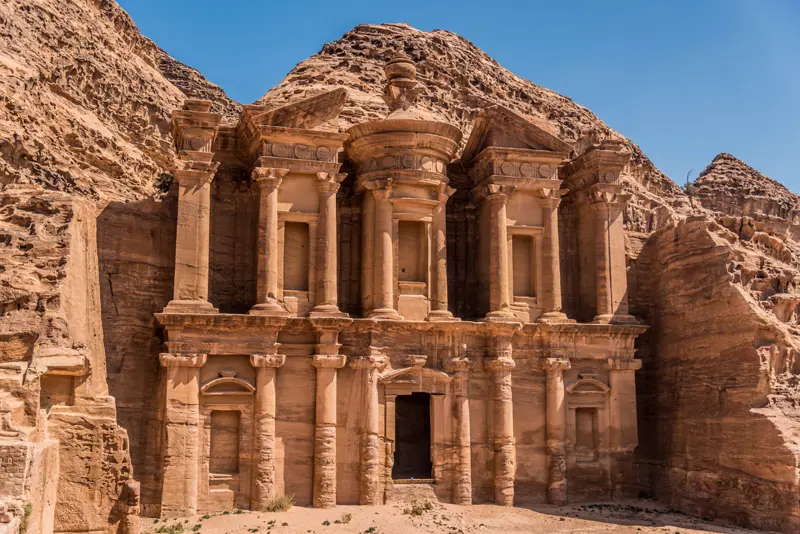
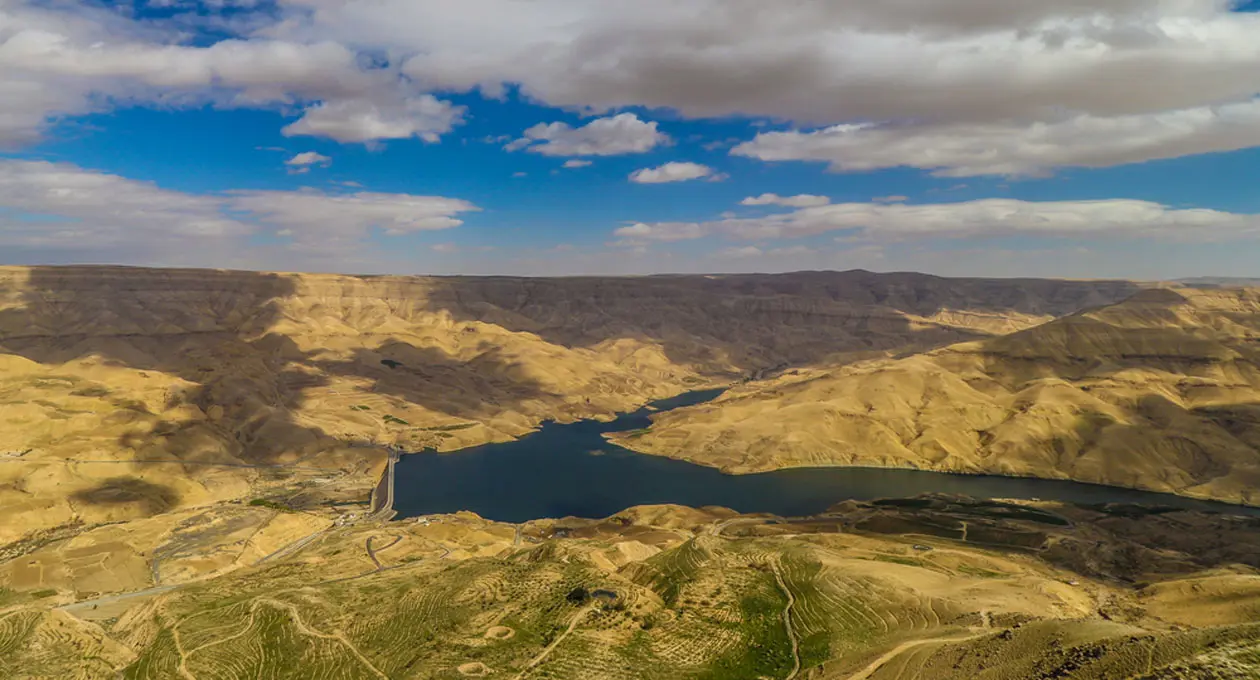
News & Useful info
You might be interested in
Destinations found in the vicinity
Other destinations
Airports nearby Aqaba



